Sardinia is one of the most magical and amazing islands in the world, a true paradise to discover in over 24,000 km2 of land area characterized by wonderful kilometres of coastline, an inland landscape that is never the same and a millenary history to tell.
How to discover all the best in a single journey? On an island that offers beauty beyond imagination, Visit Italy have selected 10 unmissable destinations for you. In this itinerary we will take you on a Sardinia tour from North to South discovering its territory through history, culture, cuisine, traditions and events for an incomparable experience. We're setting off right now, destination Sardinia!

Sardinia tour: what awaits you on your journey from North to South
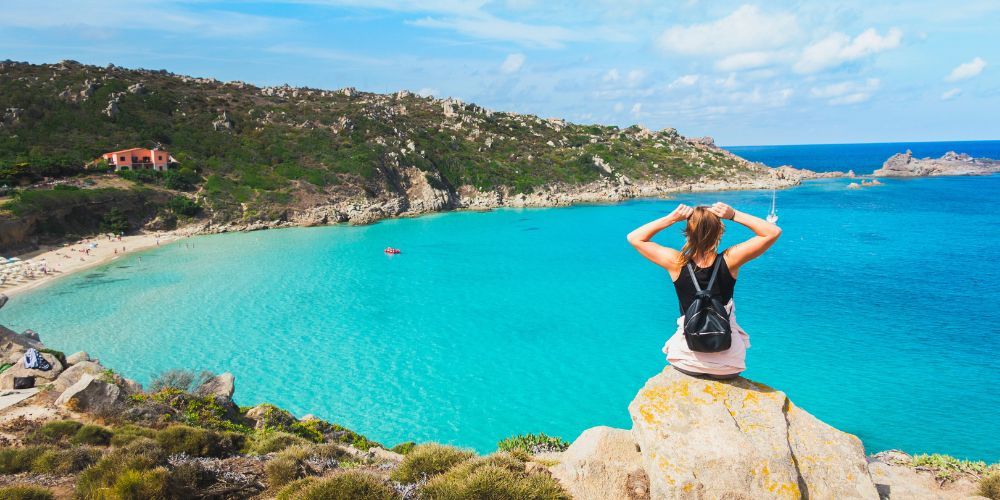
A Sardinia tour is a real adventure to experience, even before being a simple trip. And just like any food adventure, along the path we'll discover fairytale islands, sandy beaches and rocky coves bathed by waters of all shades of blue, and then we will visit the most important cities with their history, their monuments, their museums, to finally admire the testimonies of an ancient past.
We will introduce you to Sassari, the most important city in the north; Alghero, the lively Barceloneta rich in history, folklore and music; Olbia called the happy city that is one of the island's significant ports; Nuoro, which appears like a vision amidst the mountains of the interior; Cagliari, the regional capital on the south coast; and then Oristano, a splendid city on the west coast famous for its equestrian jousting called Sartiglia.
Along the way, we will also visit wonders of nature, like Asinara and La Maddalena, as well as wild places, unbelievable spectacles of nature that will remain in your heart, such as the dunes of Piscinas, where evidence of the island's ancient mining history lies, and the marine protected area of Capo Carbonara, amidst colourful scenery and rocky coastlines.
The Sardinia tour from North to South is upon us, are you ready for this adventure?
10. Sardinia tour: let’s start from the Gulf of Asinara

Our tour of the best destinations in Sardinia starts from the north-western tip of the island with the Gulf of Asinara, in the province of Sassari, made by the Island of Asinara, Punta Scorno (Asinara) to the West and Capo Testa to the East. It is not the northernmost tip of Sardinia, but it is a mandatory stop from which to start.
The entire coastline of the Gulf of Asinara is dotted with beautiful and world-famous beaches that are part of several municipalities such as Stintino and Badesi. Among these beaches, we cannot fail to mention La Pelosa, Le Saline, Ezzi Mannu and Fiume Santo.
To these is added the Platamona beach, a beach of pure white sand and shells brought by the sea currents. Passing through Marina di Sorso, one arrives at the beaches of Castelsardo, particularly Lu Bagnu, one of the beaches with the best panoramic view of the entire gulf.
The gulf closes in Gallura with the so-called Costa Paradiso. It is characterized by small inlets and sandy coves, which can be reached mostly by boat.
9. Second stop in Sassari
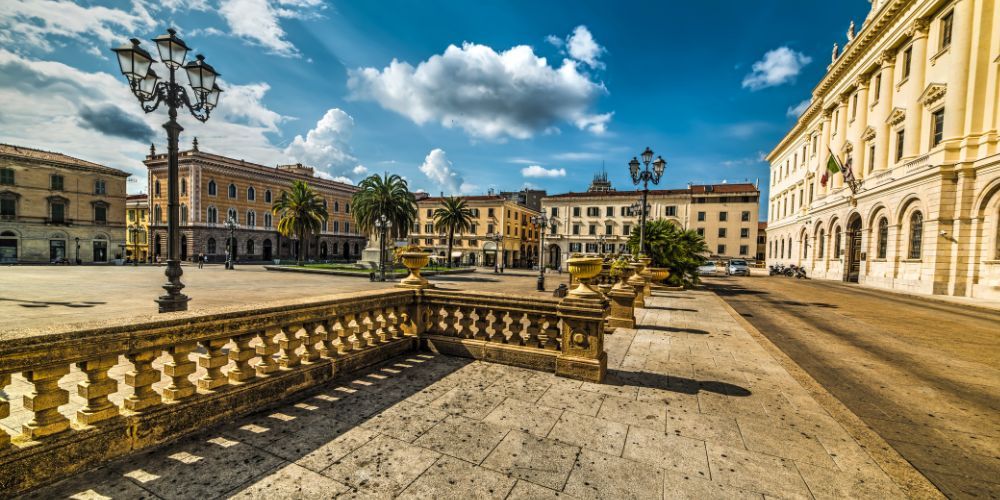
Sassari is one of the most important and largest cities in Sardinia and is the reference point for the North of the island. Its province is also extensive and hosts fascinating events related to tradition, music, local food and wine. If you don't want to miss them, keep an eye on the calendar of Salude & Trigu, a project of the Sassari Chamber of Commerce for the tourist promotion of the hinterland of North Sardinia.
The city of Sassari has its point of greatest interest in the large Piazza Italia and Corso Vittorio Emanuele. Two places where most of the city's life and history are concentrated. Among the monuments to visit there is undoubtedly the Cathedral of San Nicola, in the historic centre, along Corso Vittorio Emanuele. The cathedral has a Baroque facade, but a mainly Gothic structure. One of the oldest buildings is the Church of San Pietro di Silki which houses a manuscript code of great value, the Condaghe of Santa Maria di Silki, dating back to the origins of the city.
Worth mentioning is Via al Rosello: one of the most important for the city and for those looking for shops for shopping and places where you can taste the Sassari culinary tradition.
After the Ponte Rosello there is a famous seventeenth-century fountain, the Fontana di Rosello. It's a real symbol of the city. For fans of museum tours, the National Archaeological and Ethnographic Museum G.A. Sanna, which is one of the most famous in Italy, where many relics of Sardinian history are collected, from prehistoric times to the Renaissance.
8. Third stop in Alghero
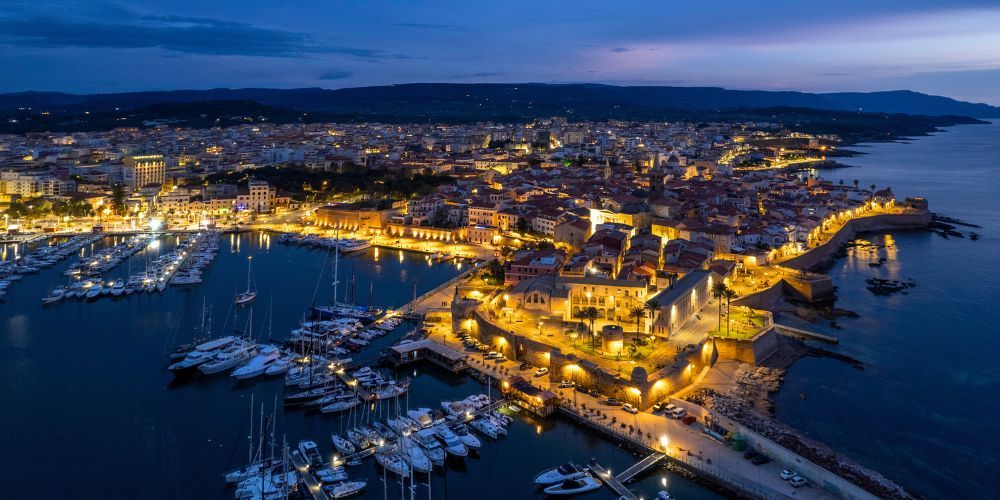
Located on the North-Western coast of Sardinia only 45 minutes far by car from Sassari, Alghero is known as Barceloneta Sarda due to the contemporary use of the Catalan language still preserved in the city context.
Alghero is considered the capital of Riviera del Corallo (Coral Coastline), a part of the coastline that extends towards South up to the picturesque Bosa and called like this for the presence of red coral in its waters, a precious raw material for the production of handmade jewels and ornaments since the age of ancient Rome. The town also host a beautiful tourist port with a view on the historic centre.
Alghero is also one of the most important and loved tourist destinations in Sardinia, hosting fascinating and involving events that liven up the town such as concerts and live music shows of JazzAlguer. Among the main tourist interesting places in the city let’s mention its historical architectures from the Gothic, Baroque and Neoclassical ages as well as its peculiar medieval fortification over the seaside, also known as Bastions of Alghero.
Alghero is also very close also to many nuragic sites, such as the giants tomb of Laccaneddu, and to one of the most interesting natural territories in the whole island: we’re talking about the Regional Natural Park of Porto Conte, a protected area that hosts the famous Grotte di Nettuno (Neptune Caves), a tourist attraction particularly appreciated rich in stalactites and stalagmites and characterized by a surprising underground lake below the sea level.
7. Fourth stop in La Maddalena
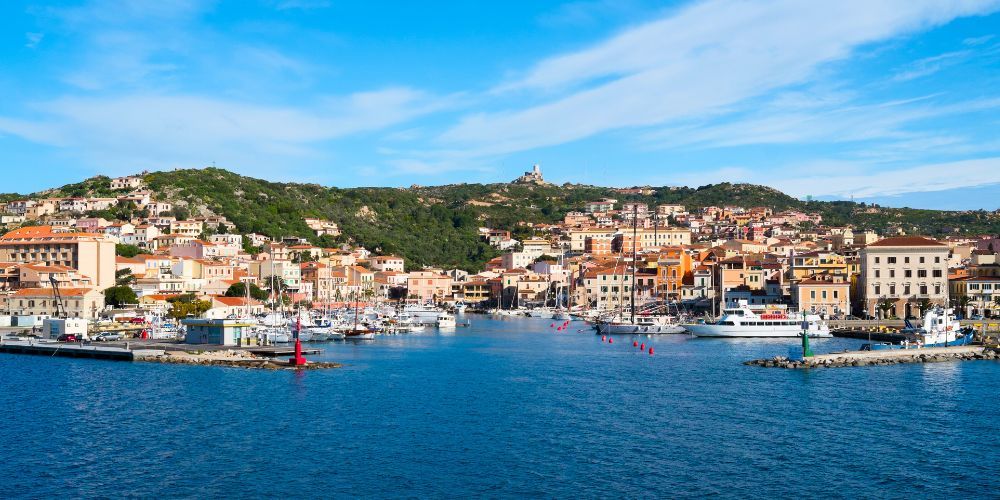
The island of La Maddalena is one of the most beautiful natural spectacles in Sardinia, one of the best destinations in a tour to Costa Smeralda. Starting from Palau you can reach one of the most famous tourist destinations in Sardinia and Italy.
It is one of the best places for a holiday between the sea and relaxation with some of the most beautiful beaches in Italy. The beaches of Testa del Polpo and Cala Spalmatore are the most important. Cala Gavetta and its beautiful marina which has a breathtaking view are added to them. The entire La Maddalena Archipelago is included in the namesake National Park, a protected area hanging between sky and sea. Around the island, there is a road that goes all the way around and that will allow you to enjoy suggestive views.
La Maddalena is connected to the island of Caprera through a bridge, the Passo Della Moneta, which offers a 600-meter walk surrounded by the sea. Also in the archipelago is the island of Budelli, whose Pink Beach you cannot miss. The name derives from the colour of the beach which has this particular pink shade.
6. Fifth stop in Olbia

Our Sardinia tour continues in Gallura to visit one of the best island's ports: Olbia. Over the years, the so-called happy city, in Gallura, has become a perfect mix between a holiday full of fun, sea, culture, history and tradition.
Olbia indeed enjoys one of the best historical centres on the whole island and it's a crucial crossroads to visit the region by sailing. A place full of history and art from every century, especially the Basilica of San Simplicio and the church of San Paolo are not to be missed. To these is added the Archaeological Museum of Olbia, which houses the major finds from the prehistoric era in Sardinia. Of great interest is the great hall of the ships in which the structures of ancient ships are kept. Furthermore, the peculiarity of this museum is that it is totally free.
If you are a museum lover, you cannot miss the tomb of the giants of Su Mont'e s'Abe, which is an archaeological site located in the territory of the municipality of Olbia. It is a huge funerary monument surrounded by greenery.
As mentioned, Olbia is also distinguished by its beaches and their variety. The beach of Pittulongu has very shallow waters and fine white sand that plunges into an azure sea. Also worth a visit are Bados beach with its sandy beach and rocks emerging from a shallow seabed, Dottore beach and many others.
The territory of Olbia also includes a series of twenty islets, many of which are so small that they are not inhabited. Among these, the most important is undoubtedly the island of Tavolara, linked to the myth of Poseidon and which hosts various events every year.
5. Sixth stop in Nuoro
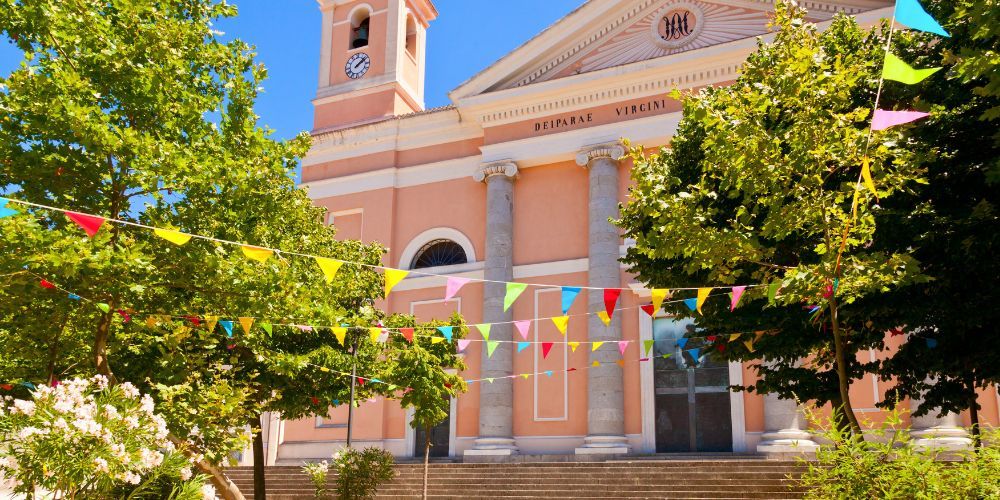
Nuoro is one of the most important cities in the island, an unmissable destination in the inland of Sardinia. It has always been central to the hinterland's cultural life, which is why it has been considered the Sardinian Athens since the 19th century.
Its historic centre is a walk through narrow alleys and stone houses, courtyards, arcades and much more that tell the history of the city. Between the districts of Séuna and Santu Pedru is the Deledda Museum, in honour of Grazia Deledda, Nobel Prize-winning writer and native of the place. The centre of Nuoro life is undoubtedly Corso Garibaldi, a few steps away you will find the cathedral of Santa Maria della Neve.
Also not to be missed is the Museum of Sardinian Life and Popular Traditions, which collects examples of traditional Sardinian culture, both material and immaterial. At the borders of Nuoro there's the Ortobene mountain which offers incredible landscapes and remains of prehistoric tombs, such as the Domus de Janas, and parks such as Sedda Ortai.
4. Seventh stop in Oristano
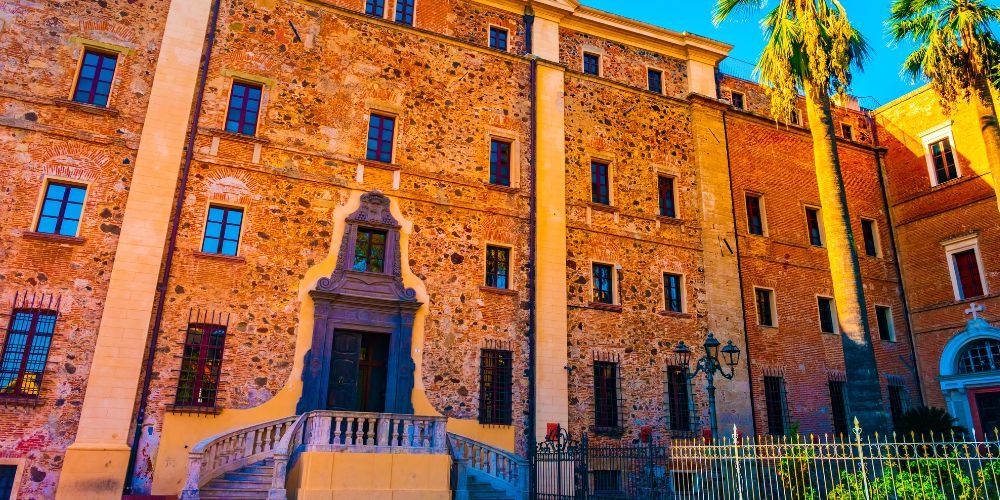
Oristano is one of the main towns in central-western Sardinia and Sartiglia, an equestrian joust of medieval origin with 120 horse riders that takes place between Sunday and Tuesday of carnival, is one of its main attractions.
Oristano had indeed a leading role in the Sardinian Middle Ages, and from the 10th century AD. it has been enriched with noble palaces, walls, strongholds and places of worship of Christianity.
In Piazza Eleonora, neoclassical buildings of value stand out: the church of San Francesco, the Corrias Carta palace and the Scolopi Palace. In the historical centre we also find Palazzo d'Arcais, the church of Santa Chiara, one of the few Gothic structures in Sardinia, and the majestic cathedral of Santa Maria Assunta, that is the Duomo of Oristano, with a mixture of styles starting from the first construction of 1130.
After visiting the city's monuments, you can delight yourself to a traditional lunch based on malloreddus with sausage, a type of pasta from traditional Sardinian cuisine, and, as a dessert, mustazzolus, lozenge-shaped sweets flavoured with lemon and cinnamon.
3. Eighth stop in Piscinas
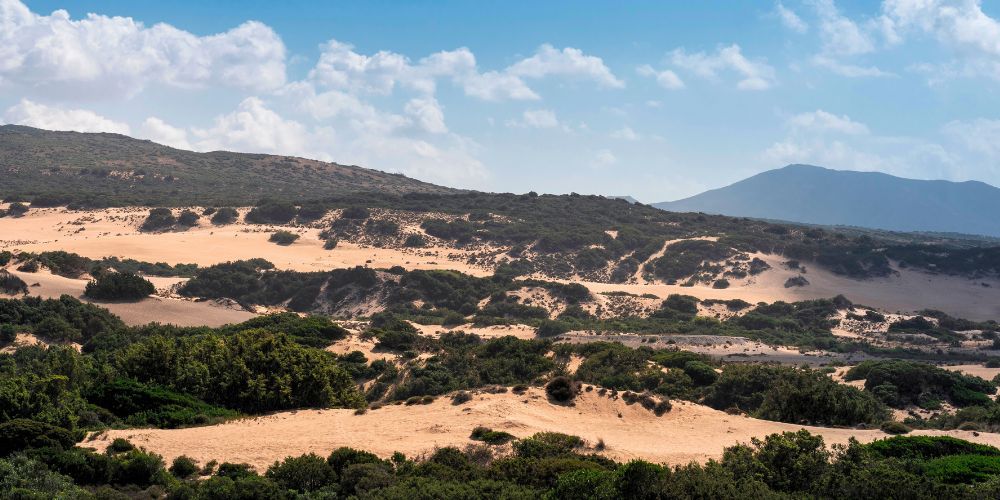
Let's now visit one of the smallest municipalities in the southwestern tip of Sardinia, Piscinas, a rural village of about 900 inhabitants that looks like a cinema scenography masterpiece, perhaps for a western or sci-fi movie. The earliest human evidence in its territory dates back some 7000 years, found in the Su Benazu cave, Monte Miana and the Tatinu rock.
Worth mentioning in this area are the dunes of Piscinas, which are one of the wildest places in Sardinia and one of the most fascinating in the island. On the expanse of sand you will also find the abandoned means and the tracks that came from Montececchio, an ancient mining town. In the dunes of Piscinas flows the Rio Piscinas, a stream known as the red river for the reddish colour of the water. The mine is easily accessible by following the tracks that lead to the beach.
2. Ninth stop in Cagliari
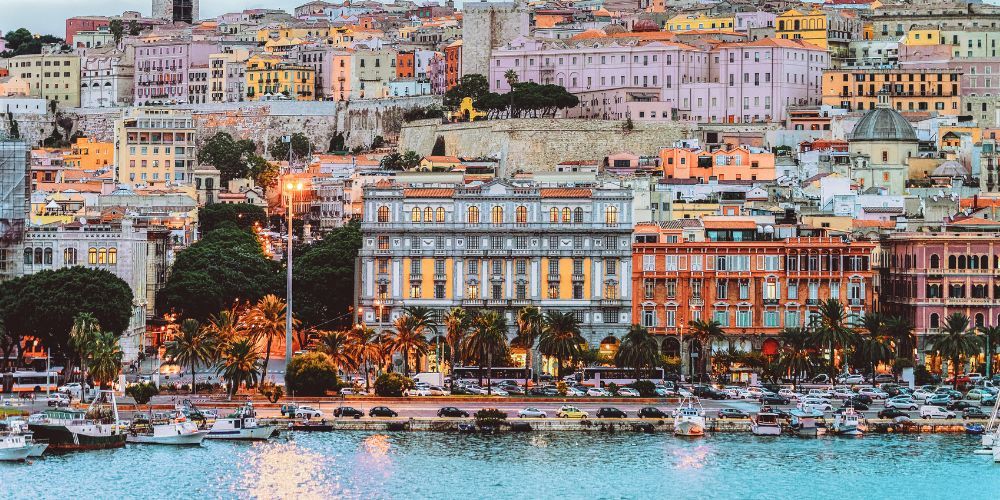
Once in the south of Sardinia, we find the regional capital: Cagliari. The Phoenicians founded the city, but then it passed into the hands of the Carthaginians, Romans, Spaniards up to the Savoy. This versatility of different styles and cultures is perfectly told in its streets and buildings.
Among what to visit in Cagliari, we include the Cathedral of Santa Maria, a real treasure in Pisan-Gothic style and the Castello district, founded in the Pisan era where you can admire panoramic views and landscapes with a crazy view over the city.
Furthermore, you can visit the La Marina district, a sort of multi-ethnic district full of shops, markets and places where you can try the Sardinian culinary tradition, and the Stampace district where you can visit the remains of an ancient Roman amphitheatre.
In the middle of the historic centre of Cagliari, you can admire the sticks of Saint Remy, built in the second half of the nineteenth century by the Savoy and which stand out throughout the city.
In addition to the immense historical tradition, Cagliari also offers beautiful seascapes such as the Poetto beach and the Saline, a habitat where the beautiful pink flamingos live.
1. Tenth and last stop of this Sardinia tour in Capo Carbonara

The marine protected area of Capo Carbonara is one of the southernmost points of Sardinia and this is where our tour ends. The area offers colourful landscapes with rocky coasts, beaches, lagoons and green areas, all in an ecosystem that has a unique balance between different species.
It is one of the best destinations in Sardinia, characterised by a vast variety of plant and animal species that you can find only here and clear waters that touch beaches and headlands all along the coast.
In Capo Carbonara you can have fun between natural and underwater excursions. You can reach Porto Giunco, set in an incredible natural landscape where a beach between two promontories stands out, surrounded by centuries-old junipers and by the Notteri pond which is home to the famous pink flamingos.
In the marine area you can practice enchanting submersions, getting in touch with an unspoiled and spectacular nature and with the particular marine species the live in this habitat.
About the author
Written on 07/09/2024


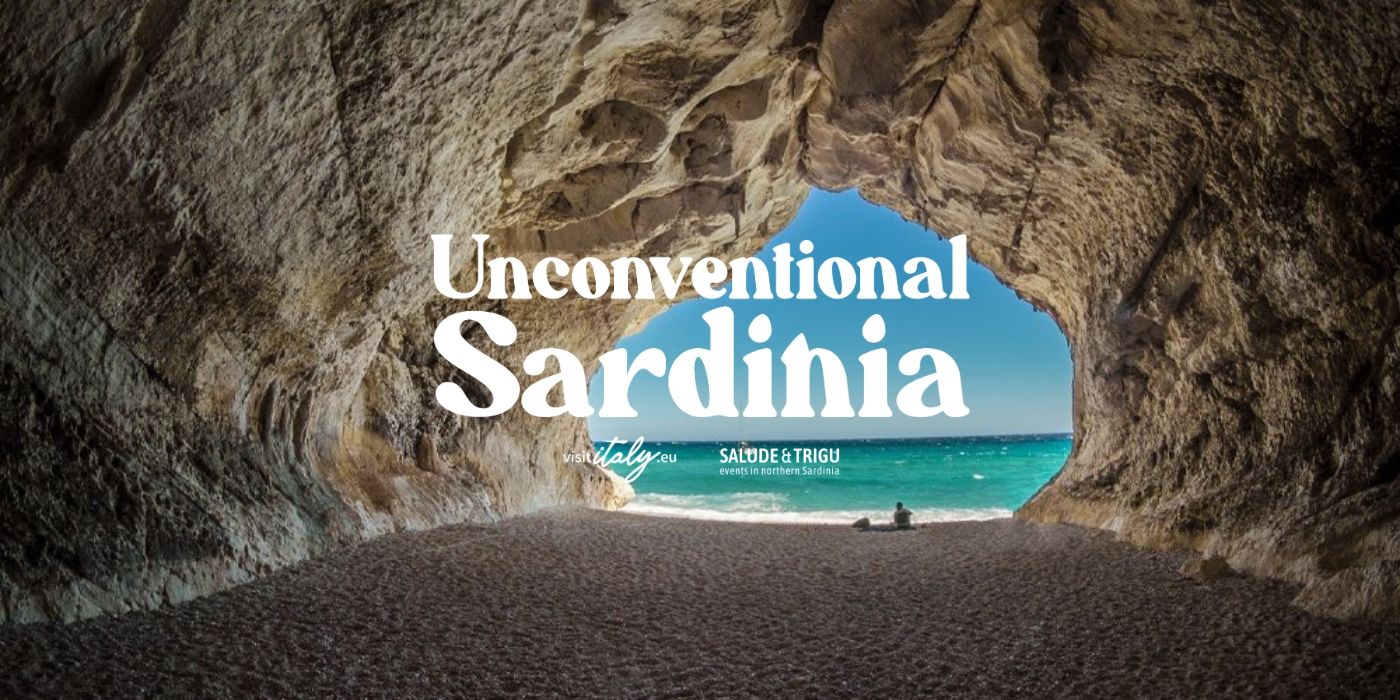
Mario Galterisi
Are you thinking of organizing a Sardinia tour from North to South and don’t want to miss the best places? Check out our itinerary in 10 stops!